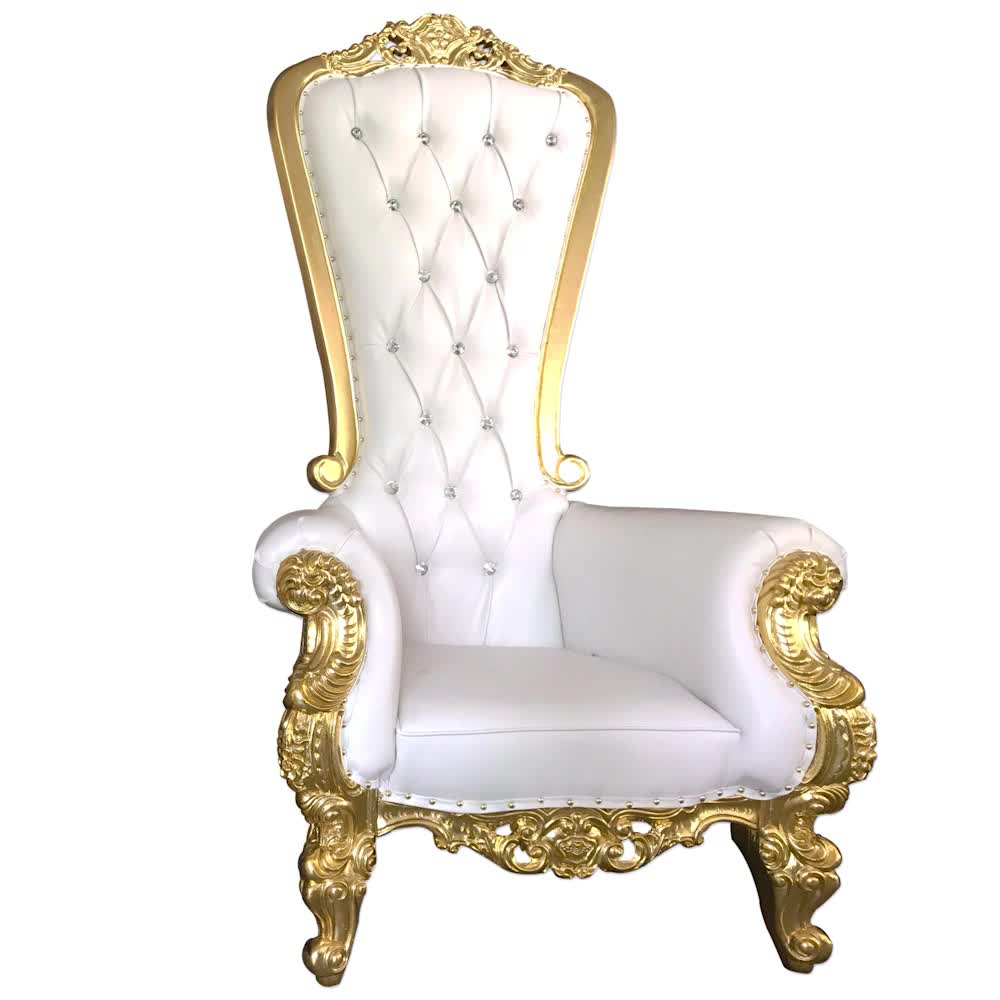Historical Significance of White King Throne Chairs

The white king throne chair, a symbol of power and authority, has evolved over centuries, its design and symbolism reflecting changing cultural and religious beliefs. From ancient Egypt to medieval Europe, the white throne chair has held a prominent place in history, serving as a visual representation of kingship and divine right.
The Evolution of Throne Chairs
The concept of a throne chair dates back to ancient civilizations. In ancient Egypt, pharaohs sat on elaborate throne chairs made of gold, ivory, and precious stones, signifying their divine status and connection to the gods. These thrones often featured intricate carvings and hieroglyphs, showcasing the pharaoh’s power and accomplishments. The color white was associated with purity, light, and divinity, and it was often incorporated into the throne chairs of Egyptian pharaohs.
During the Middle Ages, throne chairs in Europe became more elaborate, often incorporating elements of Gothic architecture and decorative motifs. White, symbolizing purity, righteousness, and the divine, was frequently used in the design of these throne chairs. The white color was also associated with the Virgin Mary, adding a spiritual dimension to the symbolism of the throne chair.
Cultural and Religious Significance of White Throne Chairs
The use of white throne chairs has varied across cultures and religions. In ancient Rome, emperors sat on ivory thrones, often adorned with gold and precious stones, signifying their imperial power and authority. White was associated with purity and virtue, reflecting the Roman ideal of a just and righteous emperor.
In the Islamic world, white has long been associated with purity, peace, and spiritual enlightenment. White throne chairs were used by Islamic rulers, symbolizing their spiritual authority and their connection to God.
Examples of Historical Figures and Events Associated with White King Throne Chairs
Throughout history, numerous historical figures have been associated with white king throne chairs.
- King Louis XIV of France, known as the “Sun King,” famously used a white throne chair adorned with gold and jewels, symbolizing his absolute power and divine right to rule.
- Queen Victoria of England, during her reign, used a white throne chair in the House of Lords, signifying her position as the monarch of the United Kingdom.
- The coronation of King Charles III, where he sat on a white throne chair, is a recent example of the continued significance of white throne chairs in modern monarchies.
Design and Craftsmanship of White King Throne Chairs

White king throne chairs, as symbols of power and authority, were meticulously crafted, showcasing the artistry and craftsmanship of their time. These chairs were not merely seats but intricate works of art, reflecting the wealth, status, and cultural influences of their creators.
Materials and Construction, White king throne chair
The choice of materials for white king throne chairs reflected the opulence and sophistication of the era. The most common materials included:
- Wood: Oak, walnut, and mahogany were favored for their durability and aesthetic appeal. These woods were often carved into elaborate designs and polished to a high sheen.
- Ivory: Ivory, prized for its whiteness and smoothness, was used for inlays, carvings, and decorative elements, adding a touch of luxury and prestige.
- Precious Metals: Gold, silver, and bronze were used for ornamentation, embellishing the throne with intricate details and highlighting its grandeur.
The construction of white king throne chairs involved skilled craftsmanship. The chair frame was typically built with mortise and tenon joints, ensuring strength and stability. The seat and back were often padded with luxurious fabrics like velvet or silk, adding comfort and elegance.
Ornamentation and Decorative Features
White king throne chairs were adorned with intricate ornamentation, showcasing the artistry of their creators. Common decorative features included:
- Carvings: The wood was often carved with intricate designs, depicting floral motifs, animal figures, or heraldic symbols, reflecting the power and lineage of the king.
- Inlays: Ivory, precious metals, and gemstones were inlaid into the wood, creating dazzling patterns and highlighting the chair’s opulence.
- Canopy: Some thrones featured a canopy, a decorative structure that added grandeur and symbolized the king’s authority.
The ornamentation of white king throne chairs was not merely decorative; it served as a powerful symbol of the king’s power, wealth, and lineage.
Okay, so you’re thinking about a white king throne chair, right? Like, totally epic, super comfy, and all that. But, let’s be real, you’re gonna be sitting in that thing for hours, so you need good lumbar support. Check out these white office chair lumbar support options to make sure your throne is actually comfy, you know?
You don’t wanna be stuck with a backache while you’re ruling the world.
Yo, a white king throne chair is totally the ultimate flex, like you’re straight outta a medieval movie. But if you wanna keep it low-key and chill, a white accent chair with wooden legs is way more comfy. Plus, it adds that classic vibe to your room, ya know?
But if you wanna be the king of your castle, a white throne chair is the way to go.
